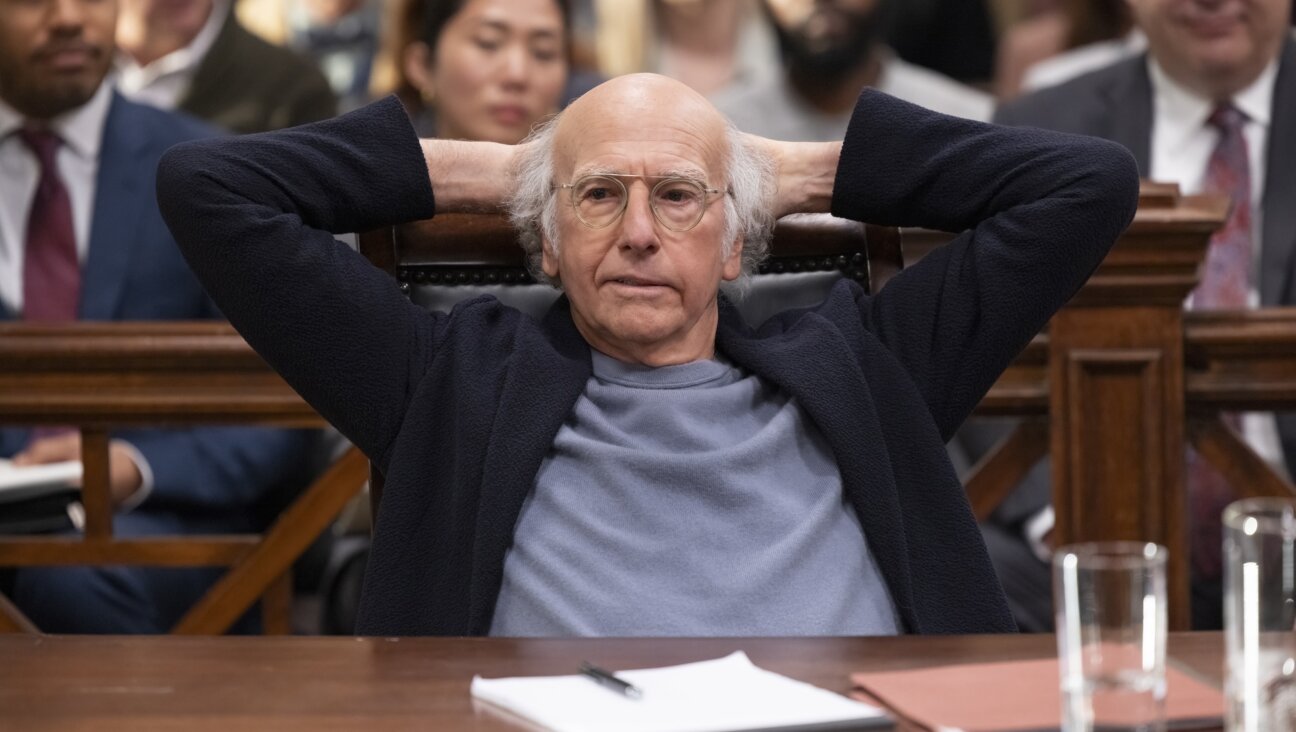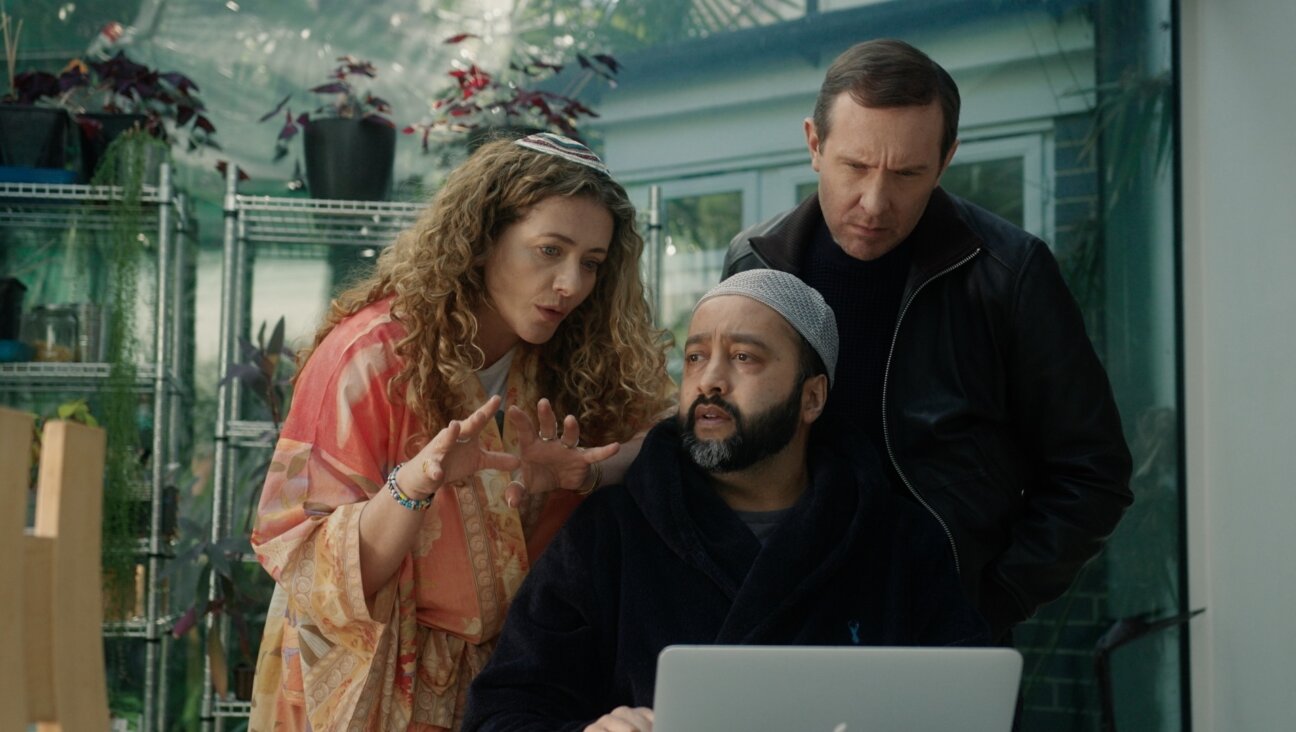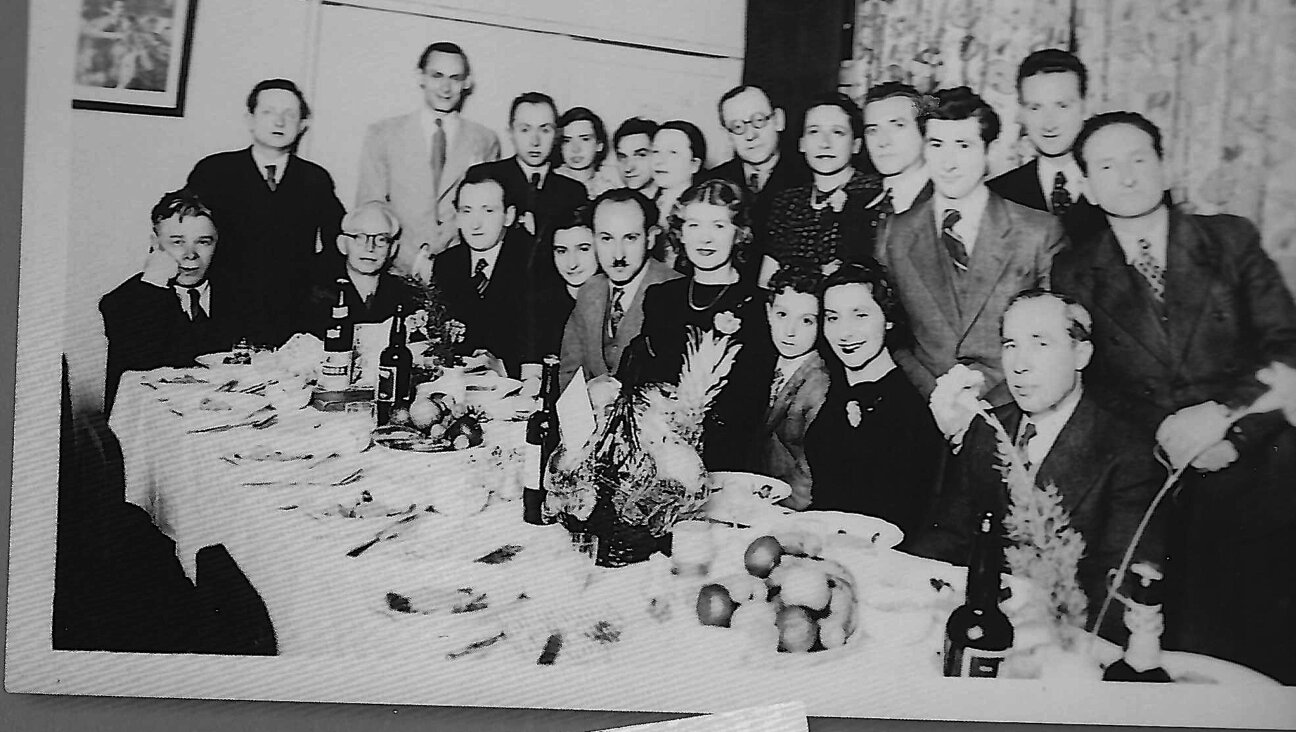The Jewish Education of an African Cinema Master

Image by Kino Lorber
The great Senegalese filmmaker Ousmane Sembene, who died in 2007 at the age of 84, chose cinema as his primary medium almost by default. A former dock worker who is now affectionately referred to as the “father of African cinema,” Sembene had already published several successful novels when he decided, at the age of 40, that if he wanted his revolutionary messages to reach beyond the educated African elite, he would need to tap into popular culture and the movies.
A devout communist, Sembene attended film school in Russia to learn his trade, and then shot his first short, a sympathetic portrait of an impoverished cart driver in Dakar, in 1963. He persevered for another 40 years, even in the face of a nonexistent industry, intermittent government censorship and a chronic lack of funds; his final film, “Moolade” (2004), a controversial indictment of traditional female genital mutilation, won an award at the Cannes Film Festival.
Today, Sembene is not nearly as well known outside Africa as the quality of his oeuvre might lead one to expect. This may not have bothered the man himself, who famously said that he considered Africa his audience and the West merely his market. But it’s a loss for world cinema, both because of his artistry as a director and because his life represents such a powerful and empowered vision of what it means to be a creator, rather than a consumer, of cultural narratives.
Not only was Sembene the father of African cinema, he was also the ultimate independent film director. So it seems fitting that the new documentary ”Sembene!” about his life and work — which has already screened to enthusiastic audience and critical response at Sundance, Cannes and Telluride — is the result of a team effort of an African scholar and an American indie film producer. Jason Silverman, 47, and Samba Gadjigo, 61, spoke with the Forward’s Sheerly Avni about their collaboration, their hopes for their subject’s long-term legacy, and the surprise Jewish roots of the filmmaker’s intellectual formation.
Sheerly Avni: Samba, you’re Sembene’s biographer, professor of French and African literature from Senegal. Jason, you’re a Jewish, 40-something film producer from New Mexico via Connecticut. And you’ve both been working on this film for more than seven years. What’s your relationship like? Love? Hate? A little bit of both?
Jason Silverman: I’d say it’s 93% love. To me, Samba’s connection with Sembene is the story. Because if Sembene did all this work and nobody saw it, then what’s at stake? What would be his legacy? Men and women like Samba are his legacy.
Samba Gadjigo: Sembene saved me. I was an “Oreo cookie” before I first read him at 14. Because we were bombarded every day by the message that France was the center of everything. It took reading Sembene to recognize that there was another way of seeing my country and my culture.
And yet when you made the film, you did so with an American Jew.
Gadjigo: I suppose I could have made this film with another African, but if I’d done so, there was a big chance that it would be a monolithic way of looking at things — which was the opposite of what Sembene himself stood for, which was a class solidarity that extended beyond Africa itself. That was his legacy, and now we are trying to pass the baton, to maintain the legacy… to pass it to Theo [Silverman’s son], to pass it on to my children.
It’s interesting to imagine what Sembene would be like today if he could make movies on his iPhone.
Silverman: It’s happening everywhere. All over the world, people are picking up digital devices and telling stories from inside their culture. To me, Sembene is the great media activist — and he’s a great independent filmmaker, too — because he was truly motivated to tell stories that weren’t being told, and he was doing it with an urgency that no American independent filmmaker could ever match. His films totally resonate with me, and so does the level of dedication he showed in fighting the fight — which to me is the most important fight — which is reclaiming the culture of stories from commodity culture. Sembene did it better and longer and with more passion and vision and courage than anyone I can think of.
Gadjigo: His degree of difficulty was so incredible, proof positive of how urgent it was to him. I can’t think of another artist or storyteller for whom the work was so urgent and who showed such determination over such a long time. So, and to me, you know it could have been Africa, it could have been Thailand, it could have been wherever. It could have been the inner city in Chicago. But it happened to be Senegal.
Sembene’s cultural formation was very much connected to the 13 years he spent working in the docks in Marseille, and particularly connected to the Jewish community there. How did this happen?
Gadjigo: In 1947, after the war, all the Jews — many of them former resistance fighters and Communists — who escaped deportation moved south. They began to nickname Marseille “La Ville Rouge.” I don’t think it is an overstatement to say that Sembene would never have become this great artist, and this great political activist, if it were not for the influence of the Jewish community in Marseilles. To these intellectuals, Sembene was just another “Jew.” He was excluded, he was ostracized, he was suffering what they were.
And so he became a Communist?
Gadjigo: He joined the French Communist Party in 1950, and then soon joined MOURAP [Movement Against Racism, Antisemitism and for Peace). There was also a library of the Communist Party where they had all these wonderful texts: Richard Wright, Jack London, Nazim Hikmet…. And that’s where he discovered Leninism, Marxism, and where he eventually joined the Communist Party. And all of his films are infused with a Marxist perspective and a Marxist analysis of society, even though he did finally leave the party. In the context of the Cold War and Stalinism, he realized that the Soviet Union was just as much of a colonizer as the West. So you see, the fact that Jason and I came together to make this film on Sembene is a class issue, and that supersedes all others. Frantz Fanon advocated that the African intellectual take a gun, go to the front, losing himself in the masses with a gun. We don’t use a gun, we use a camera.
Hands up. Don’t shoot.
Gadjigo: Yes, exactly [laughs]. Black lives matter.

I hope you appreciated this article. Before you go, I’d like to ask you to please support the Forward’s award-winning journalism this Passover.
In this age of misinformation, our work is needed like never before. We report on the news that matters most to American Jews, driven by truth, not ideology.
At a time when newsrooms are closing or cutting back, the Forward has removed its paywall. That means for the first time in our 126-year history, Forward journalism is free to everyone, everywhere. With an ongoing war, rising antisemitism, and a flood of disinformation that may affect the upcoming election, we believe that free and open access to Jewish journalism is imperative.
Readers like you make it all possible. Right now, we’re in the middle of our Passover Pledge Drive and we need 500 people to step up and make a gift to sustain our trustworthy, independent journalism.
Make a gift of any size and become a Forward member today. You’ll support our mission to tell the American Jewish story fully and fairly.
— Rachel Fishman Feddersen, Publisher and CEO
Join our mission to tell the Jewish story fully and fairly.
Our Goal: 500 gifts during our Passover Pledge Drive!























